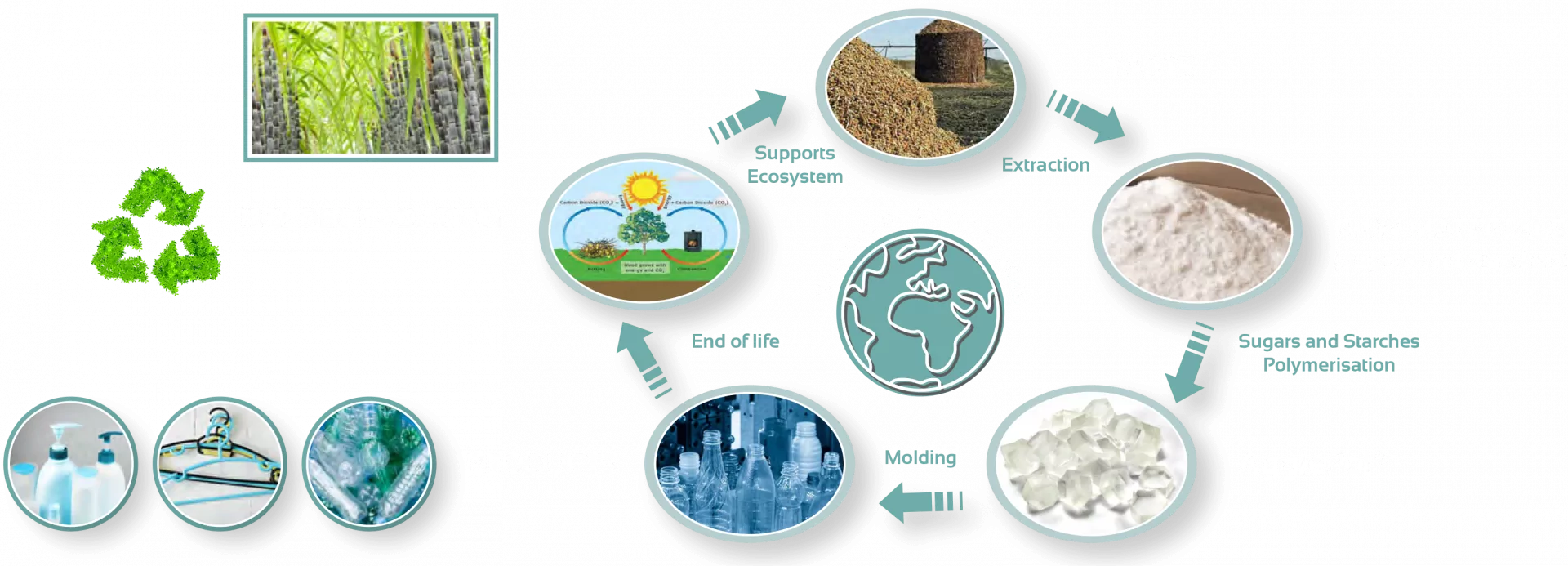Technology

Teysha’s natural product polycarbonate platform creates a wide range of polymers with tunable properties and practical applications to meet the growing demand for sustainable plastics. The platform invention provides the design of synthetic strategies for the development of polymer materials that originate from renewable resources, exhibit novel combinations of strength and toughness, as well as undergo hydrolytic breakdown to biologically beneficial by-products.
The innovation presents a specific application of the inventor’s green polycarbonates platform to develop environmentally friendly polycarbonate materials through scalable synthesis processes.
Polyhydroxyl natural products are used as the monomeric building blocks and carbonates, found in common engineering materials, as the linkages. Two classes of polyhydroxyl natural monomers,
saccharides and quinic acid, have been tested for the construction of polycarbonates. The transformations of the two natural products can produce a wide range of linear and hyperbranched polymers and copolymers. In one aspect, the invention provides optimisable compositions, structures and architectures of the polycarbonate materials with desired properties to persist in the environment for a useful period of time. In another aspect, the materials can undergo selective degradation into non-harmful substances when exposed to specific natural conditions for a prolonged period of time.
The materials are an environmentally friendly alternative to petroleum-based polycarbonate plastics and can be used in a wide variety of real world applications.
Teysha’s polymer properties can be designed to suit the needs of the product by changing or tuning the formula. The chemistry platform allows for the design of physical properties like hardness or water-resistance during use and for control of the speed of microbial degradation at the end of use.
Advantages
One significant strength of the technology is its inherent versatility as it is truly more of a platform than a single polymer system.It can be thought of as a “plug-and-play” system where various modified natural product monomers and various thiol co-monomers can be used.In addition to the co-monomers, various solvents and additives can be used to modify the properties of the final polymer network.This allows for the formation of a variety of final products that can vary from hard and stiff materials to soft, which can be directly applied to current plant machinery with low capital cost.
Applications
One significant strength of the technology is its inherent versatility as it is truly more of a platform than a single polymer system.It can be thought of as a “plug-and-play” system where various modified natural product monomers and various thiol co-monomers can be used.In addition to the co-monomers, various solvents and additives can be used to modify the properties of the final polymer network.This allows for the formation of a variety of final products that can vary from hard and stiff materials to soft, which can be directly applied to current plant machinery with low capital cost.



